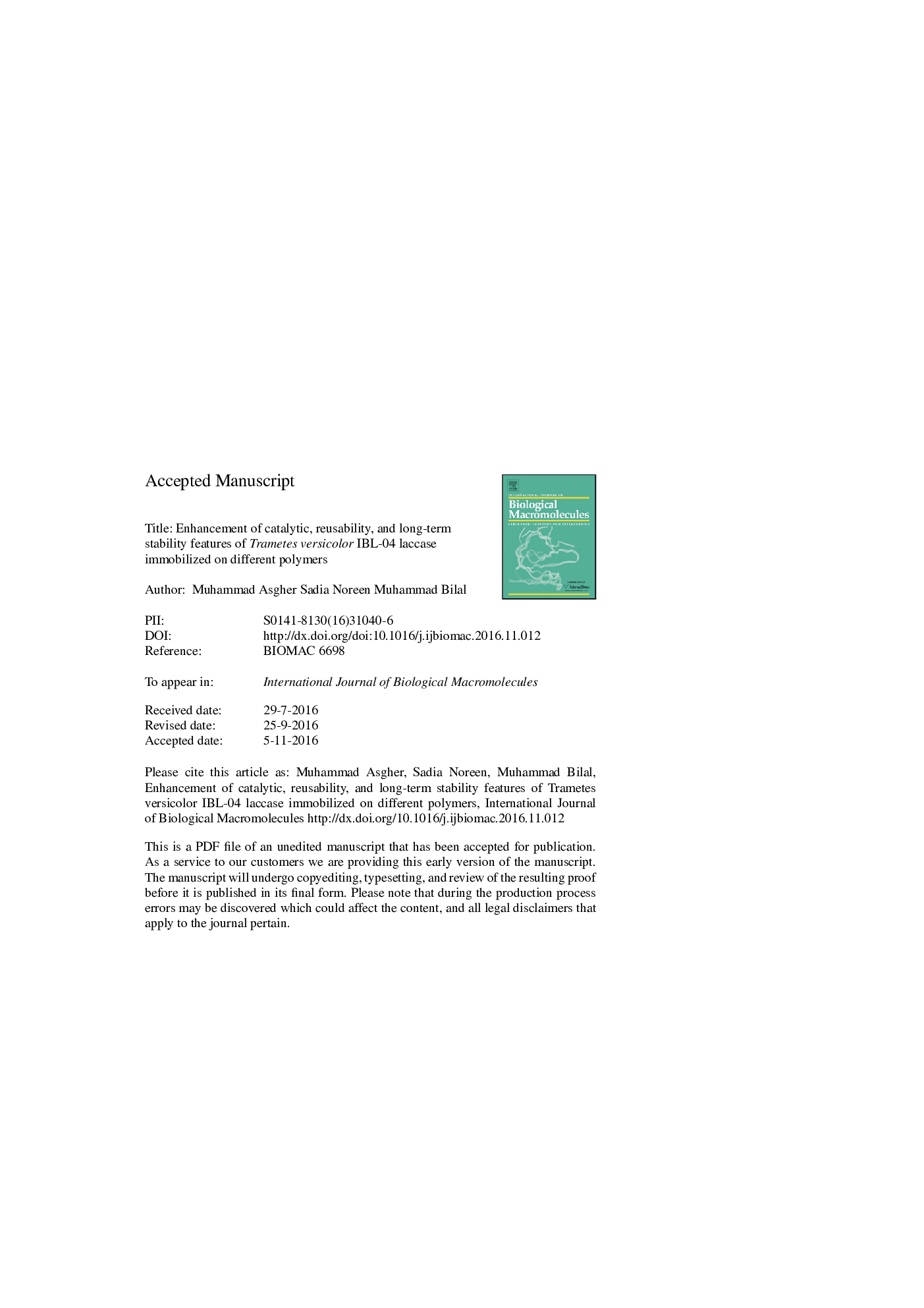| Article ID | Journal | Published Year | Pages | File Type |
|---|---|---|---|---|
| 5512376 | International Journal of Biological Macromolecules | 2017 | 36 Pages |
Abstract
In the current study, different bio-polymers such as agar-agar, polyacrylamide and gelatin were utilized as bolster materials for the immobilization of a fungal laccase through entrapment approach. Among the polymers, agar-agar matrix most firmly encapsulated the enzyme yielding significant laccase immobilization (79.65 ± 2.55%). Immobilization prolonged the reaction time of laccase and agar-agar, polyacrylamide and gelatin entrapped laccases displayed maximum catalytic activities after 10.0, 15.0 and 10.0 min of reaction, respectively, as compared to free counterpart (5.0 min). It also increased the optimal temperature by 5.0-10 °C and provided an alkaline shift of the pH optima to agar-agar and gelatin entrapped laccase, while, in case of polyacrylamide, optimum pH was displaced to acidic region. Kinetic data revealed that Km(app) values were slightly increased while Vmax values were decreased as compared to free counterpart. Polymers encapsulation led to significant improvement in activity against thermal denaturation. After 180 min at 60 °C, the enzymes preserved 28.1 ± 0.9, 48.6 ± 1.3 and 32.5 ± 1.8% residual activities, respectively, whereas, the free enzyme was completely inactive. Immobilization enabled the enzymes to resist a number of different effectors including metal ions, inhibitors/denaturants and chelating agents. Moreover, the resulted modified laccases displayed good recycling capability for substrate-oxidation reactions in several successive batches. In summary, the tremendously improved attributes of polymers-encapsulated enzymes display a high potential for various applications in different industrial sectors.
Related Topics
Life Sciences
Biochemistry, Genetics and Molecular Biology
Biochemistry
Authors
Muhammad Asgher, Sadia Noreen, Muhammad Bilal,
